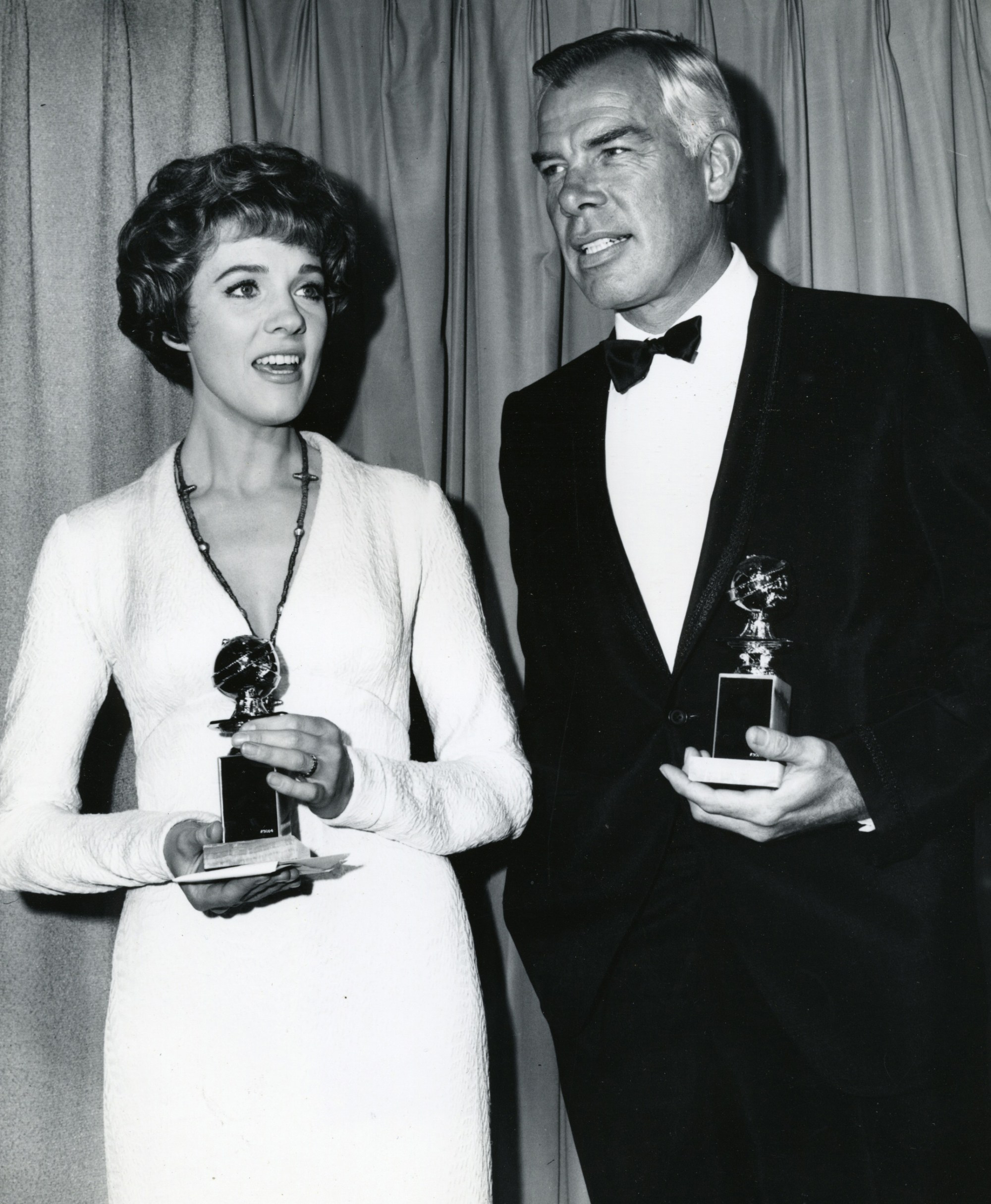
- Golden Globe Awards
Eight Decades Of Golden Globes Part 3: The 60s
.“When Peter showed us Easy Rider in 1969, I was puzzled (…) I thought it was too much for the audience. I was still very conventional. My dad did not know what to think but he was proud of Peter. Only Vadim understood at that screening that this film my brother did with Dennis Hopper would actually entirely change our approach to filmmaking.” Interviewed in May 2012 at the HFPA office, Jane Fonda reminisced about the seismic changes the industry experienced in the Sixties. Back then members of Hollywood’s old guard – like Jane’s father Henry – suddenly found themselves working alongside a new generation of filmmakers, like her brother Peter and his friend Jack Nicholson. A “New Hollywood” that made movies with the same spirit of adventure as the hard riding free spirits in Easy Rider.
In this turbulent decade, movies are suddenly different. From Bonnie and Clyde to The Graduate. In that title role, Dustin Hoffman personifies a new breed of unlikely stars. And, if John Wayne is still the Duke and finally gets a Golden Globe for True Grit in 1970 the new cowboys look more like Jon Voight in Midnight Cowboy.
Hollywood is getting used to new waves of filmmakers from Japan, India, Europe – which the HFPA never fails to recognize. Starting in the 1960s, Ingmar Bergman will become the record holder with seven Golden Globe and two Samuel Goldwyn Award nominations for best foreign film – and, in the 1980s, one for best director for Fanny & Alexander– taking home four of them.
Exotic beauties are the new flavors. Anouk Aimée (1967 Best actress Golden Globe for A Man and a Woman), Claudia Cardinale, Sophia Loren, Liv Ullman or Jacqueline Bisset (whose nomination for the miniseries Dancing on the Edge is also the recognition of one of the most international careers in Hollywood).
Faye Dunaway and Liza Minnelli are sensations. Musicals are in again. The Sound of Music makes Julie Andrews a worldwide superstar. The new era has its new pin-ups, the new bombshells – Ursula Andress, Raquel Welch, Britt Ekland – did audiences forget Marilyn?
Also, more Europeans – Marcello Mastroianni, Peter Sellers, Richard Harris and Peter O’Toole, all win Golden Globes, while British directors – David Lean, Tony Richardson – leave their mark. Sidney Poitier breaks new ground with his win for Lilies of the Fieldsin 1964. Male sex symbols bring a new virility with Steve McQueen, Paul Newman (one of the most nominated and frequent Golden Globe winner) and Robert Redford. Like Warren Beatty, Newman and Redford are politically vocal. Marlon Brando is as well, motivating friends like Jane Fonda. He had shown up to collect his Golden Globe for On the Waterfront in 1955, but he won’t accept the one he gets for The Godfather at the 30th Golden Globes ceremony on January 28, 1973. His unclaimed statuette would sell for $68,500.
Becket, The Lion in Winter, Spartacus, In the Heat of the Night, Lawrence of Arabia, Doctor Zhivago, My Fair Lady . The HFPA recognizes them all. On the television front, many legends now have their own shows: From Doris Day to Frank Sinatra. Mannix, Columbo, Mission: Impossible are hits all over the world.
On a photograph taken on February 24, 1969, its stars, Martin Landau with wife Barbara Bain, pose next to Cecil B. deMille honoree Gregory Peck while Barbra Streisand holds the statuette she won for her part in Funny Girl (category Best Actress: Musical or Comedy).
Do you remember Eva Six and Donna Douglas? Probably not. They were the very first Miss Golden Globes – now Golden Globe Ambassador– to appear at the 20th ceremony on March 5, 1963. The idea later evolved, introducing the children of famous actors to assist the presenters on stage and in philantropic efforts.

